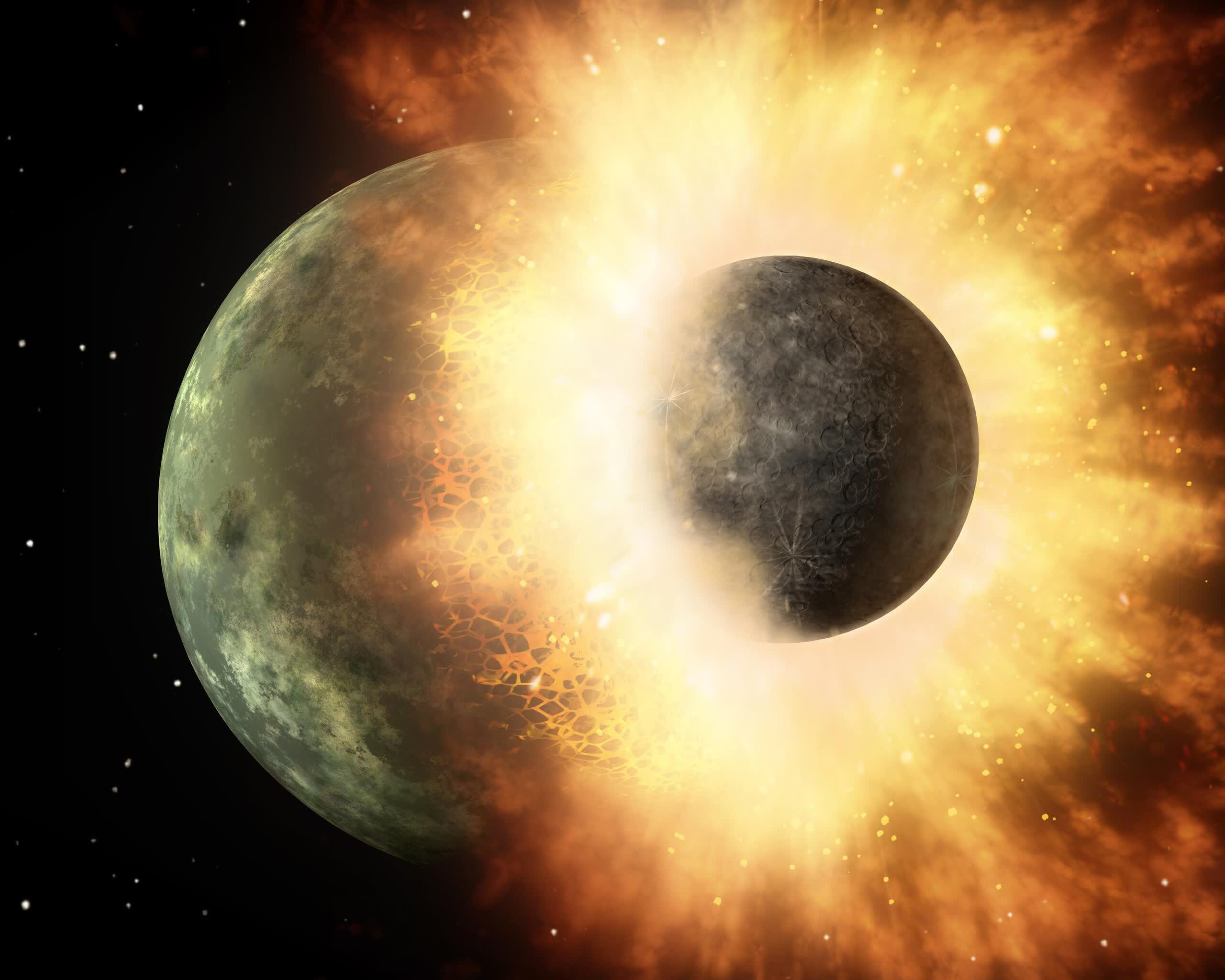The big picture: Theia is a hypothetical ancient planet that orbited the Sun during the formation of the solar system. According to the giant-impact hypothesis, this protoplanet collided with Earth around 4.5 billion years ago, and some of the ejected remnants contributed to the formation of the Moon.
Theia, a name associated with the Greek goddess of sight and vision, is also known in mythology as one of the 12 Titan children of the Earth goddess Gaia and the sky god Uranus. Beyond mythology, Theia is the name of a planet long believed to have played a crucial role in shaping Earth's structure and in giving rise to the Moon.
A recent study has identified a new astronomical object, often referred to as a "buried planet," located within Earth's mantle, which could potentially be the remnants of Theia. Through computer simulations, Theia has been pinpointed in two distinctive rock formations within the Earth's mantle. These formations span thousands of kilometers and exhibit a slightly higher density compared to their surroundings.
The notion that these anomalies in the mantle could be remnants of the ancient protoplanet, Theia, is not entirely new. Planetary scientist Robin Canup notes that the new study represents the first serious investigation of this theory. The study's authors employed seismology to unveil two continent-sized anomalies characterized by low seismic velocities in Earth's lowermost mantle. When seismic waves encounter these "blobs," they slow down, suggesting a different composition than the surrounding mantle.
In 2021, researchers conducted computer simulations to model the interaction between Theia and Earth's mantles. These simulations illustrated how material from the external protoplanet, estimated to be approximately the size of Mars, would descend to the lowest region of Earth's mantle. As time passed, more remnants of Theia would accumulate at this location, eventually forming the denser blobs that are detectable today.
The recent study builds upon the earlier computer simulations and provides a more comprehensive explanation of how the collision between Theia and Earth led to the creation of a two-layered mantle structure. The remainder of the protoplanet was ejected and ultimately coalesced to form the Moon. The researchers used simulations to illustrate how materials from Theia could persist above the Earth's core throughout the planet's evolution, resulting in the formation of two isolated mantle blobs.
Qian Yuan, one of the study's authors, believes that these refined simulations will compel the scientific community to take the giant-impact hypothesis more seriously. The next phase of research aims to practically validate this simulated theory by directly comparing rock samples obtained from Earth's mantles with samples collected from the Moon.
